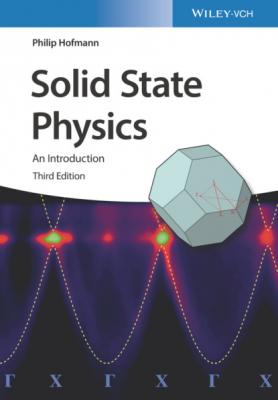Solid State Physics. Philip Hofmann
Чтение книги онлайн.
Читать онлайн книгу Solid State Physics - Philip Hofmann страница 3
 href="#ulink_19687039-a40c-5713-8871-03b89ecb1794">Figure 1.10 Illustration of X‐ray scattering from a sample. The source and d...Figure 1.11 Top: A chain with a lattice constant
href="#ulink_19687039-a40c-5713-8871-03b89ecb1794">Figure 1.10 Illustration of X‐ray scattering from a sample. The source and d...Figure 1.11 Top: A chain with a lattice constant 2 Chapter 2Figure 2.1 (a) Typical interatomic potential
3 Chapter 3Figure 3.1 (a) Illustration of stress
4 Chapter 4Figure 4.1 (a) One‐dimensional chain with one atom per unit cell.
5 Chapter 5Figure 5.1 Measured and calculated electrical conductivities of metals as a ...Figure 5.2 (a) Illustration of the Hall effect. (b) Equilibrium between the ...
6 Chapter 6Figure 6.1 The formation of energy bands in solids. (a) Bonding and antibond...Figure 6.2 Band formation in Si. The lower band is completely occupied with ...Figure 6.3 Electronic states in the free electron model. The increasing ener...Figure 6.4 (a) Density of states
7 Chapter 7Figure 7.1 Charge neutrality and the position of the chemical potential in a...Figure 7.2 Transport of charge in an electric field